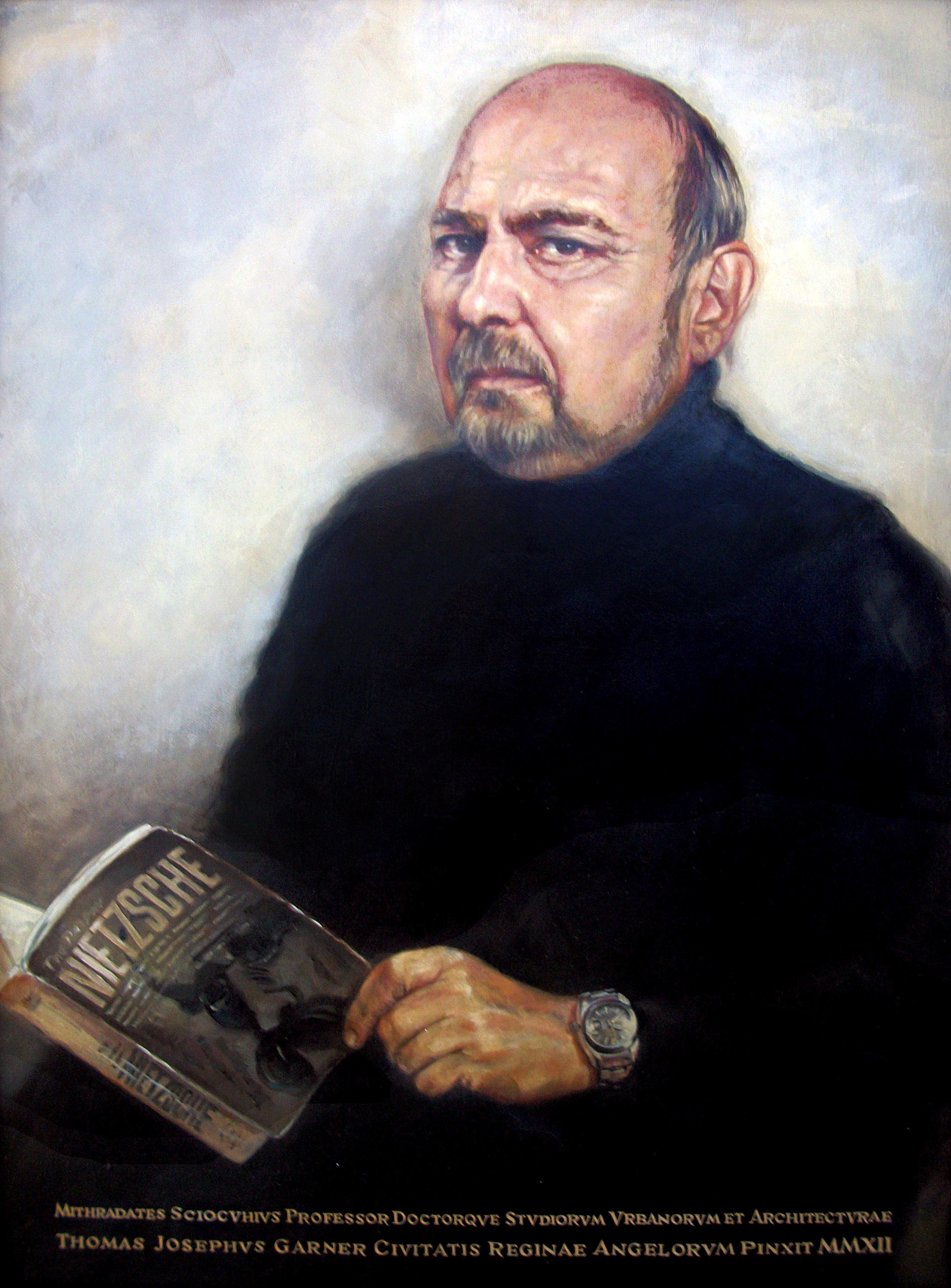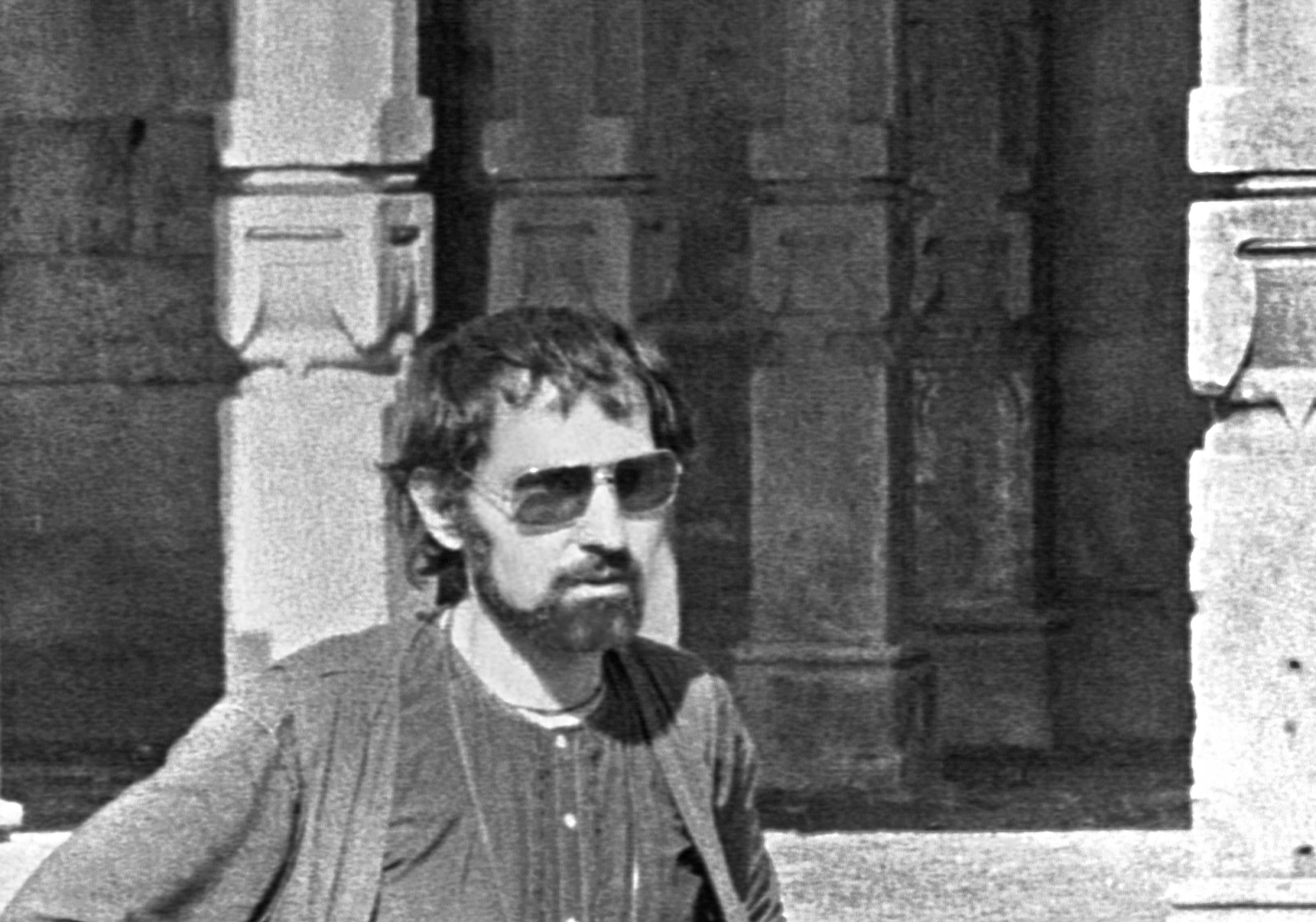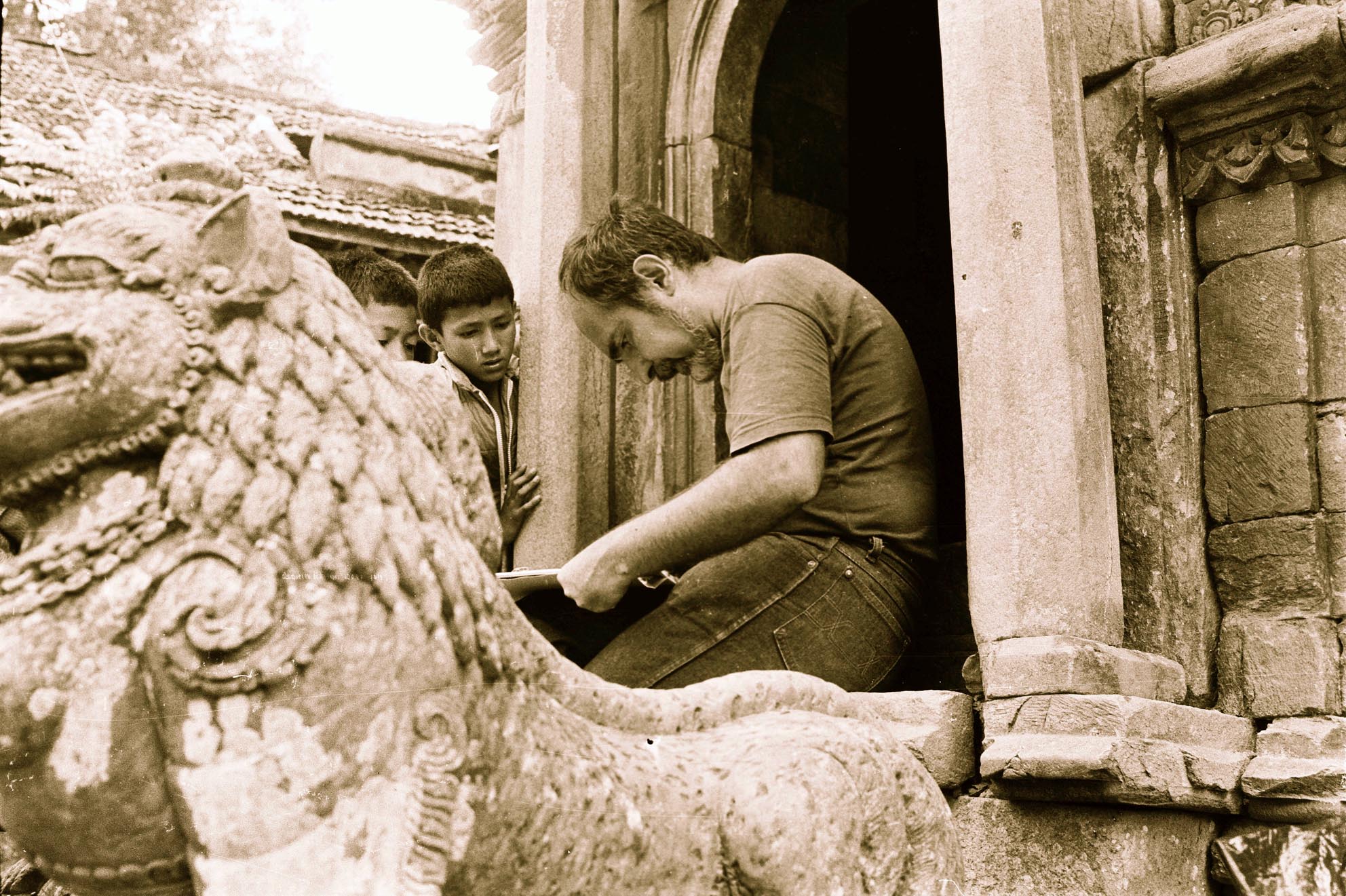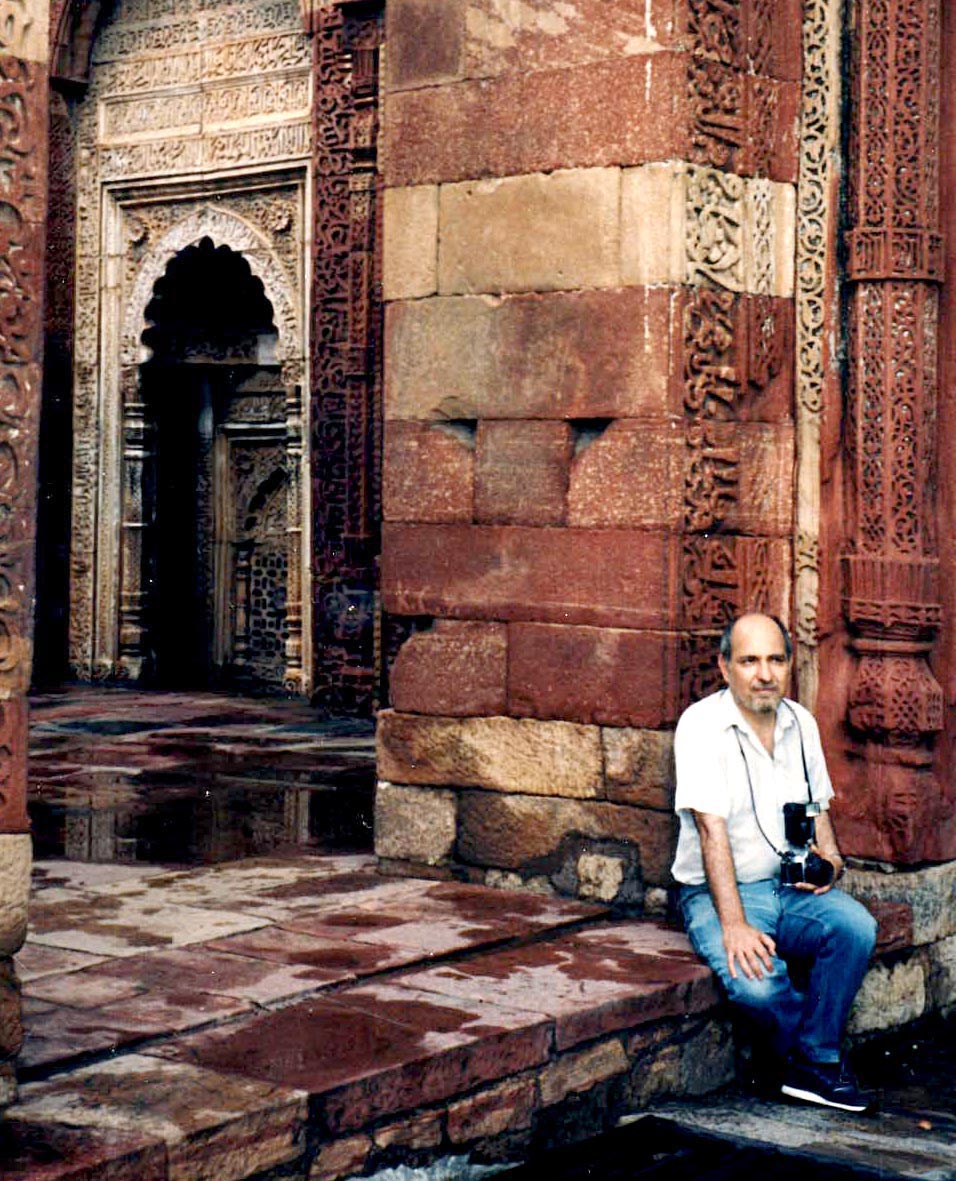 Mehrdad Shokoohy, MArch, MSc, PhD, DSc
Mehrdad Shokoohy, MArch, MSc, PhD, DScEmeritus Professor, The University of Greenwich
Fellow of the Royal Asiatic Society (FRAS)
Life Fellow of the Royal Society for the encouragement
of Arts, Manufacture and Commerce (FRSA)
Portrait by Thomas Garner, 2012, oil on canvas, 460 x 610 mm

Seeking out little-known and
unreported sites and monuments.
Survey of the late twelfth-century
Shahi Masjid in Khatu, Rajasthan,
India (1977)
Born in Tehran in 1944 Mehrdad Shokoohy studied architecture at the National University of Iran. His
career as a writer began at the age of seventeen, first writing short stories in weekly magazines and
later publishing five books in Persian, amongst them ‘The Calamity of the Sixth Day’ (Faji`a-yi ruz-i shishum), 'The Shadow and the Mirror' (Saye wa simab) and ‘Desolation’ (Barahut). From 1968 to 1974 he also wrote classical music programs for Iranian radio. As an architect he designed and constructed institutional buildings and private houses. He was also Head of the Department of Architecture at the Centre for the Intellectual Development of Children and Young Adults, and designed and built a number of libraries and cultural centres in Iran.

Kirtipur, Nepal, 1986 fieldwork, survey of
Narayan Temple prior to its restoration
After a year of travel in Africa he studied Environmental Conservation at Heriot-Watt University and the Edinburgh College of Art (1975-6) followed by reading for his doctoral thesis in the same institutions (supervised by Professor A. D. H. Bivar at the School of Oriental and African Studies, University of London) on the topic of the early mediaeval architecture of Iran and Afghanistan (1976-78). He continued his post-doctoral studies at SOAS (1979-80) concentrating on the twelfth to sixteenth century architecture of South Asia, a field which he continues to explore together with his architectural historian wife Dr Natalie H. Shokoohy.
 Their focus has been on little or unknown sites and monuments in India and Nepal, resulting on the publication of numerous learned papers, nine monographs and contributions to many other books covering material from historical inscriptions to architecture, archaeology and mediaeval urban planning. In 2001 he was awarded the rare and prestigious degree of Doctor of Science (DSc) by Heriot-Watt and Edinburgh College of Art (University of Edinburgh) for his extensive and pioneering work in his field.
Their focus has been on little or unknown sites and monuments in India and Nepal, resulting on the publication of numerous learned papers, nine monographs and contributions to many other books covering material from historical inscriptions to architecture, archaeology and mediaeval urban planning. In 2001 he was awarded the rare and prestigious degree of Doctor of Science (DSc) by Heriot-Watt and Edinburgh College of Art (University of Edinburgh) for his extensive and pioneering work in his field.
Until 2011 he was Professor of Architecture and Urban Studies at the University of Greenwich where he had been working since 1981. Alongside with teaching, in early 1990 he took part in founding an Urban Design course at the School of Architecture and established and edited the University’s annual Urban Design Studies (1995-2001). He retired in September 2011 and as Emeritus Professor continues his research and publications, living partly in the United Kingdom and partly in California.
Delhi, India, at the tomb attributed to Iltutmish dating from
the early thirteenth century and imitating in stone the brick
architecture of ancient Khurasan. Although a famous monument,
it is not well known that the actual tomb is in a crypt below, and
the structure only houses a sarcophagus.